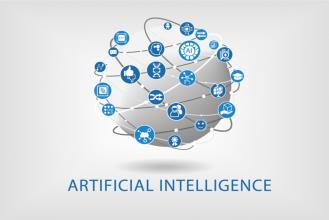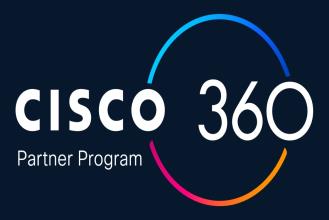27 Real-World AI & Machine Learning Examples Transforming Industry Today
- 09 November, 2025 / by Fosbite
Introduction: Why these AI and Machine Learning examples matter
Artificial intelligence (AI) and machine learning (ML) aren’t sci-fi anymore — they’re practical, often messy tools reshaping whole industries. I’ve reviewed dozens of deployments and, honestly, the best ones aren’t flashy; they combine good data, pragmatic model design and a clear business question. The list below collects 27 real-world AI examples 2025 that show how teams turn models into measurable value across healthcare, retail, energy, media and more. For a complementary perspective on how leaders should evaluate AI investments and avoid costly dead ends, see our coverage of AI investments dead ends.
How this list is organized
To keep this useful, entries are grouped by sector. Each item names the company or project, the practical AI or ML approach used (NLP, computer vision, time-series forecasting, etc.), and the benefit that actually mattered to the organization. Read it like a field guide: scan for the sectors you care about, then dive into the techniques you could reuse.
Consumer goods
- Hello Barbie — A conversational AI example using NLP in consumer devices: voice is processed on-device, intent classification happens in the cloud, and replies return quickly to preserve the flow of conversation. The result: personalized play and follow-up interactions that feel more human. This is a neat case of conversational AI examples applied at scale while wrestling with privacy trade-offs.
- Coca‑Cola — Combines sales, supply-chain and consumer signals with predictive analytics use cases to optimize launches and distribution across 200+ countries. The secret sauce: close alignment between forecasting teams and regional merchandisers. Benefit: faster product-market fit and tighter inventory planning.
- Heineken — Leverages IoT and ML for marketing segmentation and brewery operations (sensor data + predictive models). Benefit: more efficient distribution and regionally tailored campaigns — an example of IoT and ML for predictive maintenance and marketing working side-by-side.
Creative arts: AI as collaborator
- IBM Chef Watson — An instance of AI-augmented creative workflows: ingredient-pairing suggestions come from chemical data, flavor profiles and recipe corpora. Chefs treat the outputs as inspiration, not commandments. Benefit: accelerates ideation and surfaces combinations a human might never test.
- Watson-assisted Gaudí-inspired sculpture — IBM fed visual and textual data about Antoni Gaudí to a model that suggested motifs and themes. Artists used those prompts to jumpstart designs — a small story that shows how creative teams can use AI for rapid prototyping.
- Music-generation models — Systems trained on melodies, lyrics and listener feedback propose melodies or harmonies; composers then iterate. Benefit: streamlines composition and helps predict audience appeal — practical examples of AI-assisted creativity in music and visual arts.
Energy
- BP — Uses predictive analytics and sensor networks to monitor equipment health and detect anomalies in real time. This is classic predictive maintenance: it catches small failures before they cascade. Benefit: reduced downtime and improved operational safety. Learn more about how predictive maintenance and energy deployments compare across industries in our piece on AI data centres Asia Pacific.
- GE Power — Implements IoT-enabled turbines and ML models in a “digital power plant” approach. The models drive scheduling, optimize loads and extend component life — a canonical example of ML model deployment in production for energy.
Financial services
- Experian — Applies machine learning use cases to huge credit and transactional datasets to refine scoring and spot risk patterns. Benefit: faster underwriting decisions and better fraud risk assessments.
- American Express — Uses anomaly detection in transactions and supervised models to catch fraud in real time. The practical win: prevented large losses and enabled more personalized offers — a real-world AI use case for fraud detection in financial services. For context on how fraud and account-takeover risks are evolving with AI, see our guide to account takeover prevention.
Healthcare
- Infervision — Trained convolutional neural networks (CNNs) to screen CT scans for early lung-cancer signs, prioritizing cases so radiologists focus where it counts. This is AI use cases for healthcare imaging and diagnostic assistance in action. Benefit: improved diagnostic throughput and reduced fatigue-related errors.
- DeepMind (Google) — Applied deep learning and reinforcement learning in care-path planning and image analysis. The point: these models can cut planning time and surface non-obvious insights for clinicians — still experimental in many settings but promising.
Manufacturing & Automotive
- Volvo — Uses telematics and predictive models to forecast part failures and monitor safety signals. Benefit: higher safety and proactive maintenance — another predictive maintenance example but with a safety-first lens.
- BMW — Integrates big data across design, production and sales and invests in autonomous systems research. Benefit: improved R&D prioritization and customer-lifecycle insights.
- John Deere — The company acquired Blue River Technology to apply computer vision in tractors that distinguish crops from weeds and spray selectively. Concrete benefit: reduced chemical use and improved yield ROI — a classic example of computer vision in agriculture. If you want deep dives on applied computer vision and agriculture use cases, check our coverage of AWS AI infrastructure and how cloud AI drives scale for these deployments.
Media and Publishing
- BBC — interactive audio drama — Built conversational experiences for smart speakers to create two-way storytelling. Benefit: new narrative formats and novel engagement methods — an example of conversational AI for entertainment.
- Press Association (PA) — RADAR — Uses natural language generation for automated local news: public data transformed into readable articles at scale. Benefit: fills coverage gaps and scales reporting — a practical NLG example for journalism. For broader context on NLG and newsroom automation, see our explainer on ChatGPT.
- Netflix — Combines collaborative filtering, content-based filtering and rigorous A/B testing to personalize recommendations and inform commissioning. This is the textbook example of recommendation systems and personalization delivering higher retention and smarter investment decisions.
Retail
- Burberry — Uses ML to spot counterfeits, personalize marketing and align in-store experiences with customer profiles. Benefit: stronger brand loyalty and a richer luxury experience — a good example of how ML helps personalize retail experiences and combat counterfeits.
- Walmart — Leverages ML, IoT and mobile apps (Scan & Go, Pickup Towers) to unify online and in-store flows; experiments with computer vision for store analytics. Benefit: streamlined operations and better customer convenience — a case study in supply-chain and inventory planning optimization.
Customer service & experience
- Microsoft — Offers enterprise bot frameworks and intelligent assistants that companies embed into workflows. Benefit: scalable customer support and productivity gains; practical examples of chatbots and virtual assistants in customer service.
- Disney — Uses MagicBands and sensor data to personalize park visits and smooth operations. Benefit: optimized staffing and a calmer guest experience — a tactile example of sensor data and digital-twin-style orchestration.
- Global Fishing Watch (Google) — Applies ML to satellite AIS data to detect illegal fishing patterns. Benefit: actionable transparency for marine conservation — how satellite data and ML detect illegal fishing in practice. For more on satellite data and environmental AI use cases, see deepfake environmental impact coverage that also touches on data center implications.
Social platforms
- Twitter — Uses deep learning for recommendation, content moderation and surfacing relevant conversations. Benefit: improved relevance and content safety — an ongoing balancing act between personalization and governance.
- Facebook — Applies large-scale models to rank feeds, target ads and automate moderation. Benefit: personalized feeds and automated signals for safety — again, ethics and governance are front-and-center here.
- Instagram — Uses ML for ad targeting, content ranking and offensive-comment detection. Benefit: safer user environment and better ad ROI.
Key takeaways: What these examples teach us
- Data + clear objectives = value. The best projects start with a measurable question (reduce churn, detect fraud, predict failure) and reliable pipelines.
- Human + AI collaboration wins. Many deployments augment experts — doctors, artists, farmers — rather than replace them. That’s where adoption actually happens.
- Ethics and governance matter. Bias, privacy and transparency must be embedded early if you want a system that scales without surprises. If you need governance patterns for agentic or autonomous systems, our piece on agentic AI is a helpful resource.
Short case: A hypothetical small business example
Picture a regional bakery collecting point-of-sale, weather and promotion data. With a simple time-series forecasting model the baker predicts croissant demand by hour and adjusts batches, cutting waste by 20% and improving freshness at peak times. Small, measurable wins like this (less waste, happier customers) are often the fastest route from curiosity to production. If you’re asking, “can small businesses benefit from AI forecasting?” — yes, and this is exactly how. Explore practical forecasting and infrastructure considerations in our AI data centres Asia Pacific analysis.
Further reading and sources
Want to dig deeper? Start with Bernard Marr’s practical overviews of AI applications and the Forbes write-up on Global Fishing Watch for the satellite-data example. Also search for case studies on predictive maintenance examples in energy and manufacturing or on how Netflix uses machine learning to recommend shows — those papers and posts tend to be refreshingly candid about engineering trade-offs. For a frank take on which AI investments may fail and how leaders should think about ROI, read Bill Gates AI warning.
Conclusion
AI and machine learning work when anchored to real-world problems. From creative arts to heavy industry, these technologies change how organizations operate — but only when teams start small, define success metrics and prepare their data. In my experience, that combination — pragmatic pilots, close collaboration with domain experts and attention to ethics — is the fastest route from pilot to production impact. If you want guidance on avoiding wasted AI spend and framing projects for measurable ROI, our article on avoid failed AI projects is a recommended follow-up.
Note: This article summarizes public examples and research. Companies evolve their implementations, so tools and outcomes may change over time.










